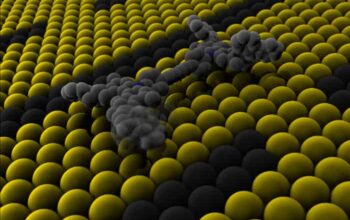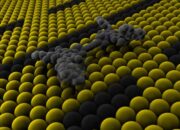Quantum interference, a fascinating facet of quantum mechanics, plays a pivotal role in the operation and understanding of Superconducting Quantum Interference Devices (SQUIDs). An exploration of this phenomenon exposes both the intricacies of quantum theory and the practical applications that stem from it. SQUIDs, known for their extraordinary sensitivity to magnetic fields, leverage quantum interference to measure minuscule changes in these fields with remarkable precision.
At the heart of quantum interference in SQUIDs lies the behavior of superconducting materials. Superconductors exhibit a unique property called zero electrical resistance when cooled below a critical temperature. This allows for the unimpeded flow of electric current, leading to the establishment of superconducting loops. When a magnetic field is applied to such a loop, the superconducting electrons, or Cooper pairs, begin to exhibit wave-like behavior, creating a platform for quantum interference effects.
Central to SQUID operation is the Josephson effect, named after physicist Brian Josephson, who predicted this phenomenon in 1962. The Josephson effect manifests in a junction formed between two superconductors separated by a thin insulating barrier. When a direct current flows through this junction, an ac voltage is produced, which oscillates at a frequency proportional to the current. This ac voltage exists concurrently with quantum interference—a hallmark of the SQUID’s remarkable operation.
Quantum interference is fundamentally the result of the superposition principle, a core tenet of quantum mechanics. In a SQUID, two distinct paths are available for Cooper pairs to traverse, each corresponding to different phase shifts. These paths interfere with one another, leading to constructive or destructive interference outcomes. The resulting fluctuations in voltage can be precisely measured, allowing for sensitive detection of magnetic fields.
The significance of quantum interference becomes even more profound when considering the phase difference between the two superconductors in the junction. This phase difference is crucial; it determines whether the interference will be constructive (increasing current) or destructive (decreasing current). The sensitivity of SQUIDs to even the faintest magnetic fields is attributable to this delicate balance, demonstrating the intricate interplay between wave properties and particle-like behaviors of electrons.
One might wonder why this phenomenon captivates physicists and engineers alike. The answer lies in the breadth of potential applications. SQUIDs have proven invaluable in areas such as medical imaging, specifically in magnetoencephalography (MEG). MEG utilizes SQUIDs to measure the magnetic fields produced by neuronal activity, allowing for a non-invasive insight into brain functions and disorders. This capability positions SQUIDs at the intersection of fundamental physics and practical, life-enhancing technologies.
Moreover, SQUIDs serve as key components in quantum computing and information processing. As the field of quantum computation progresses, the ability to manipulate quantum bits (qubits) with high precision becomes paramount. SQUIDs, through their inherent quantum interference properties, facilitate the control and entanglement of qubits, thus bridging the gap between theoretical foundations and experimental realizations.
Nevertheless, the allure of quantum interference in SQUIDs is not merely confined to technology. It poses philosophical questions about the nature of reality itself. The duality of wave-particle behavior invites intrigue, challenging classical intuition and prompting a reevaluation of our understanding of the universe. The randomness inherent in quantum mechanics juxtaposed with the determinism of classical physics lays fertile ground for intellectual discourse, igniting curiosity within the scientific community and beyond.
Moreover, the study of quantum interference in SQUIDs inspires explorations into new materials and configurations that may yield even greater sensitivities or functionalities. Researchers continually investigate alternative superconductors, such as high-temperature superconductors, and innovative designs that could enhance the utility of SQUIDs. By pushing the boundaries of what is currently understood, scientists strive to unlock new possibilities, potentially leading to the next generation of quantum technologies.
In summary, the interplay of quantum interference in SQUIDs reveals profound insights into both quantum mechanics and practical applications. The phenomenon exemplifies the delicate balance between theoretical exploration and technological advancement. It encourages a holistic understanding of quantum behavior, laying the foundation for advances across various disciplines, including medicine, materials science, and computation. As the scientific community continues to probe the depths of quantum phenomena, the extraordinary capabilities of SQUIDs and their quantum interference mechanisms stand as a testament to humanity’s relentless curiosity and quest for knowledge.
Ultimately, quantum interference in SQUIDs represents more than just a technical achievement; it embodies the very essence of scientific inquiry, a blend of fundamental research, technological innovation, and philosophical contemplation. It is this captivating blend that makes the study of SQUIDs—and by extension, quantum interference—an endlessly fascinating endeavor, inspiring future generations to delve into the enigmatic world of quantum mechanics.










